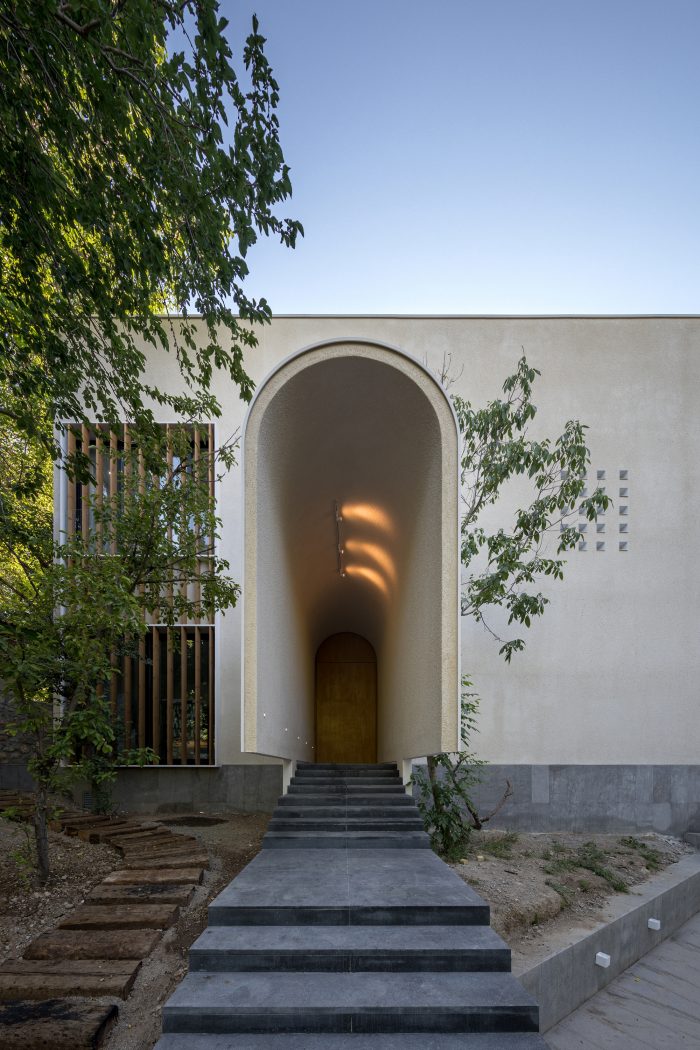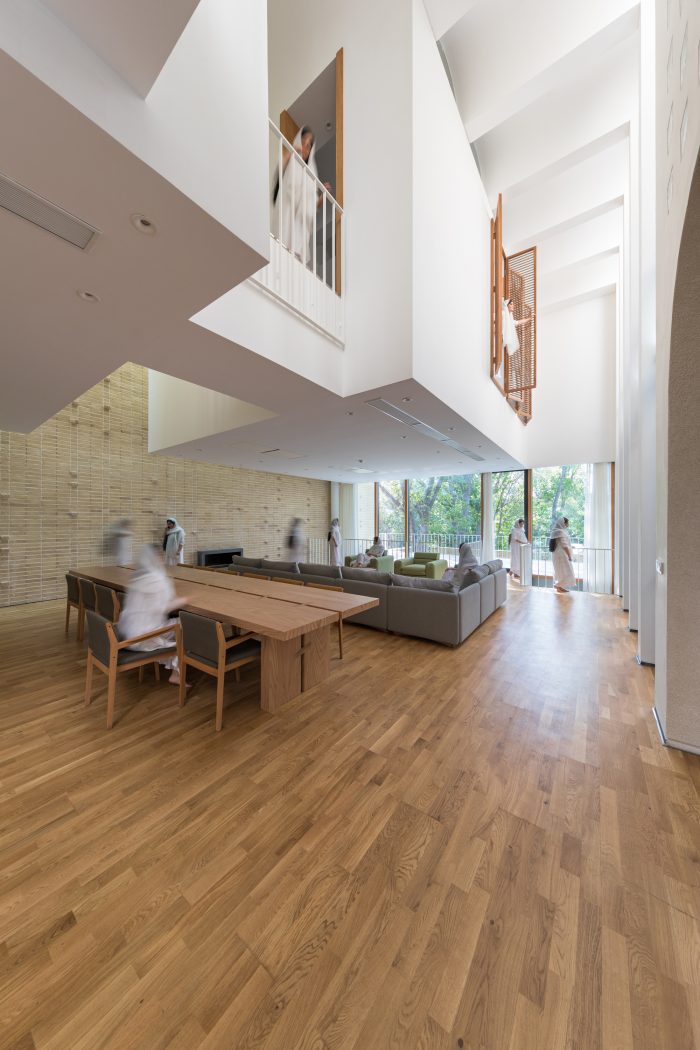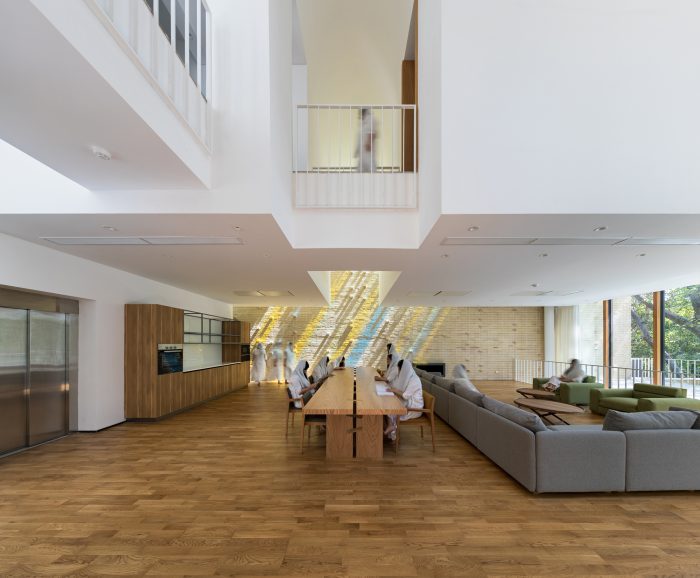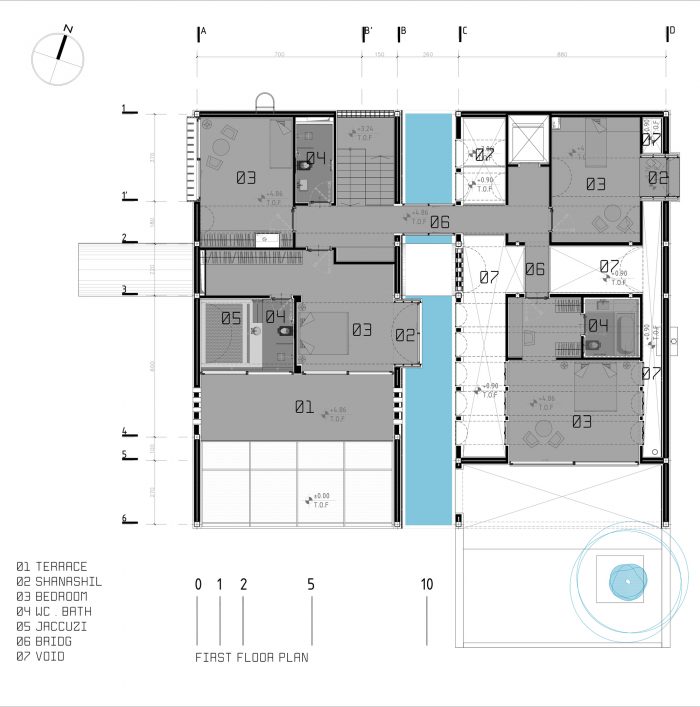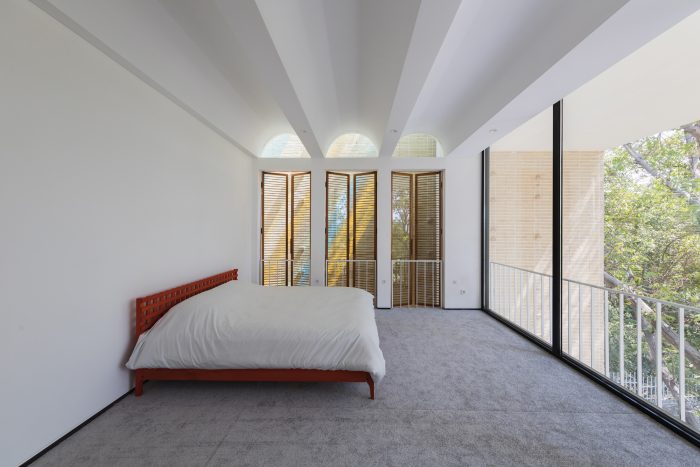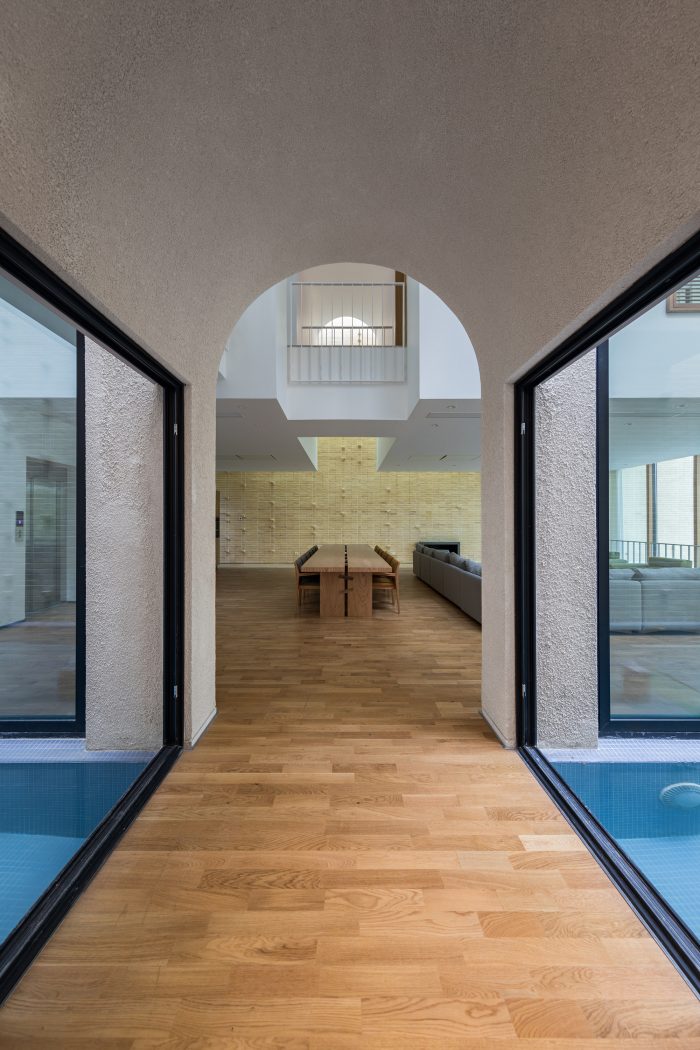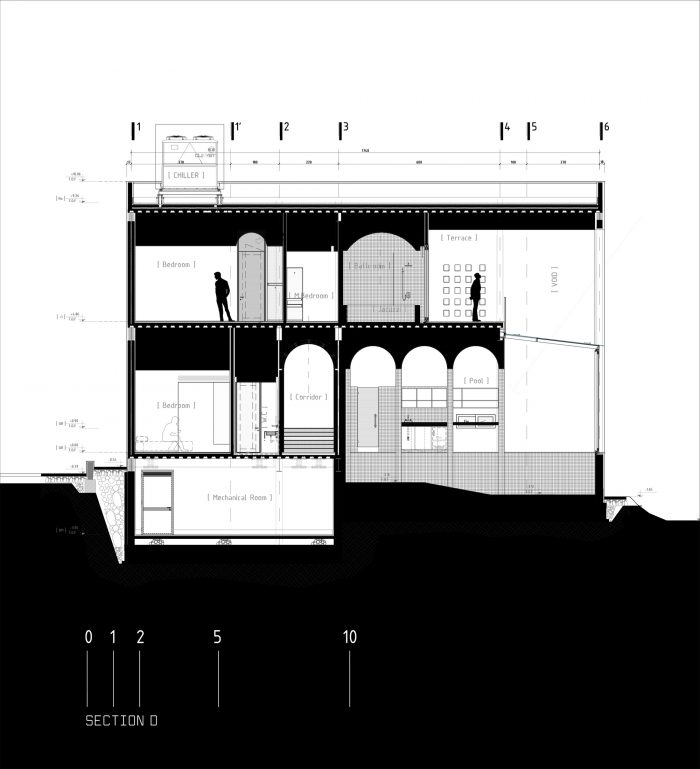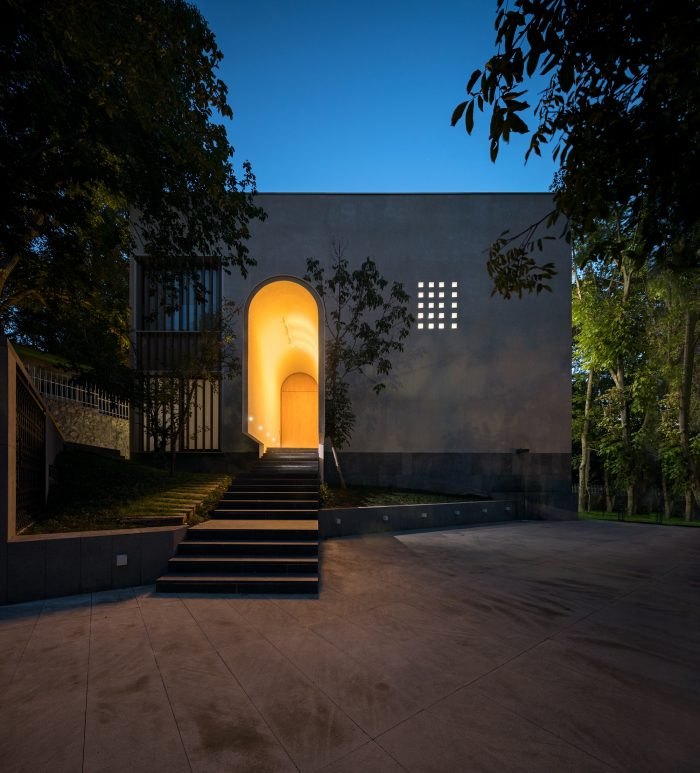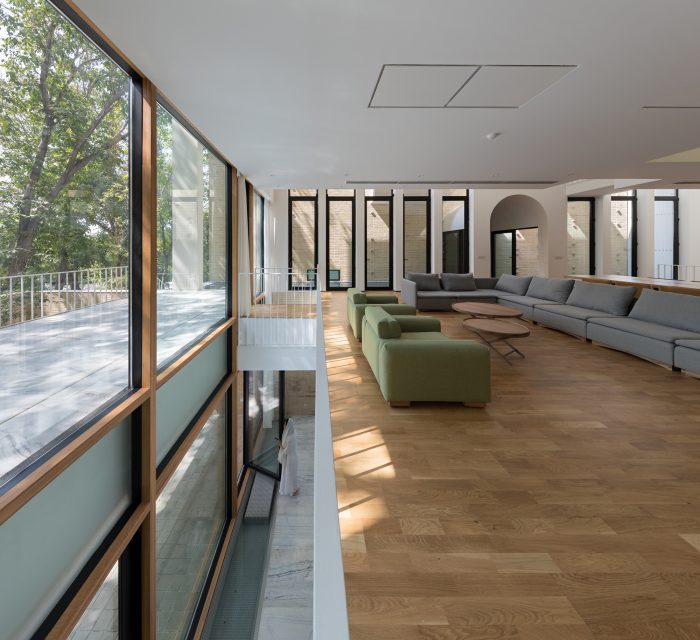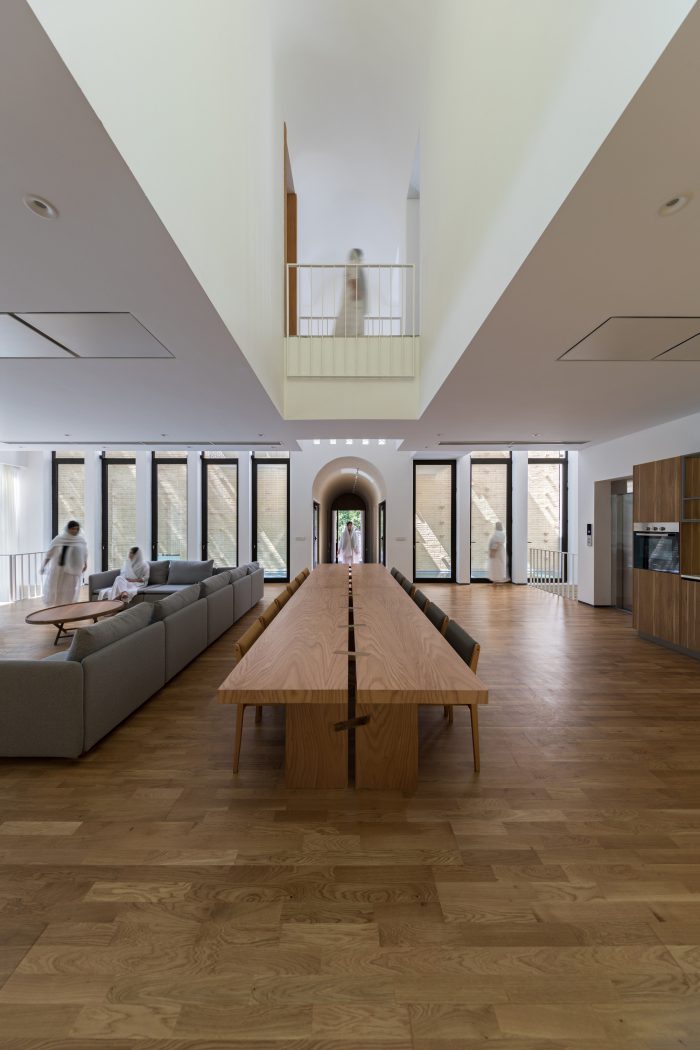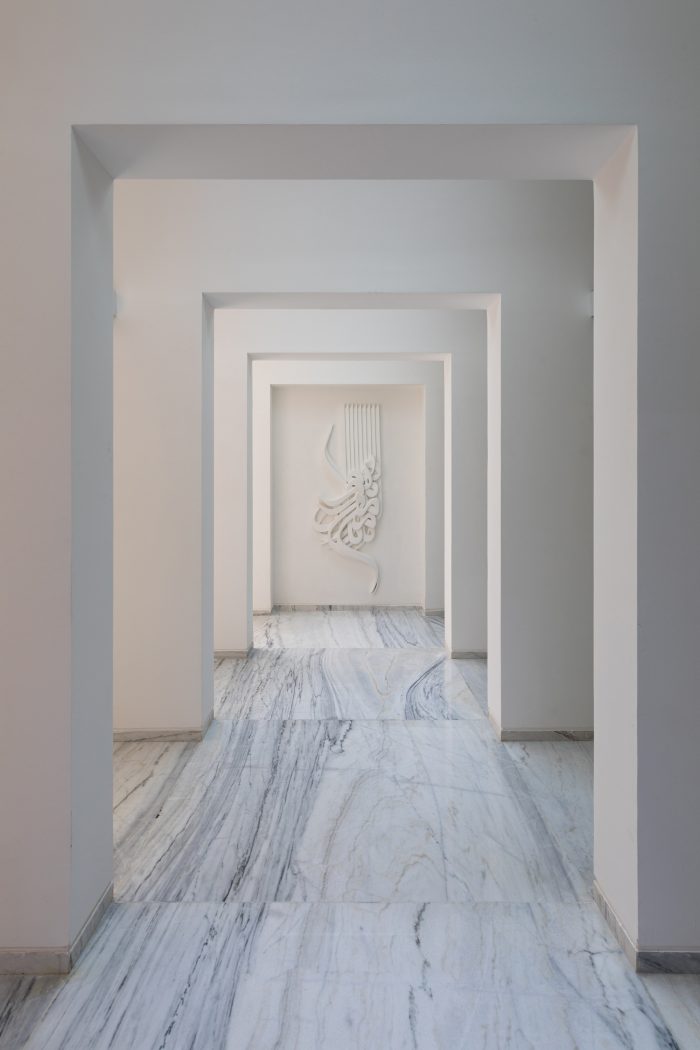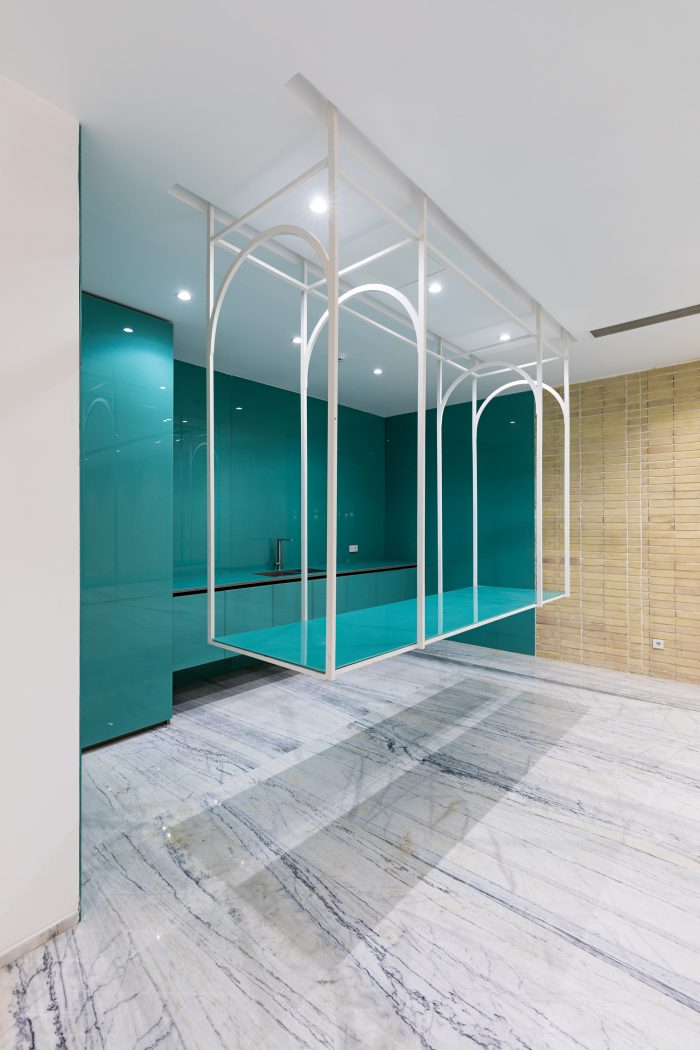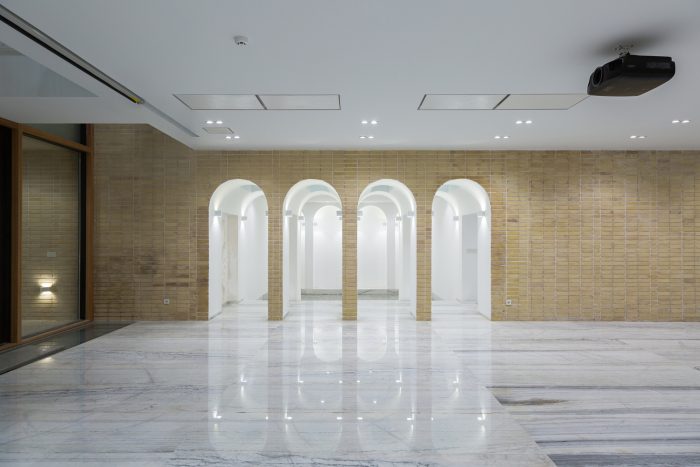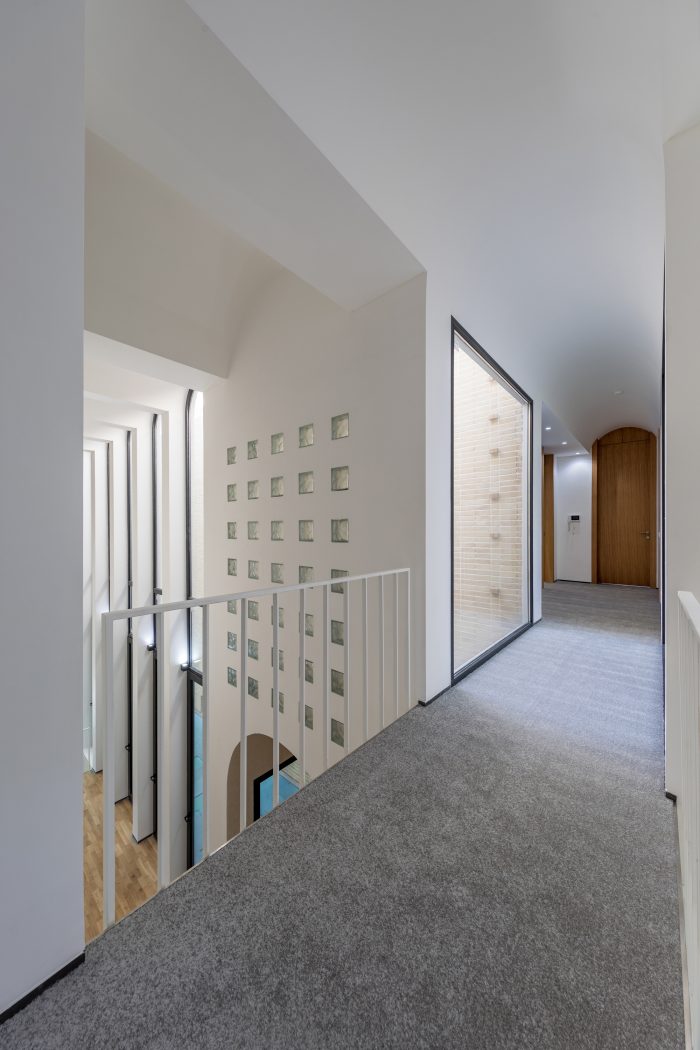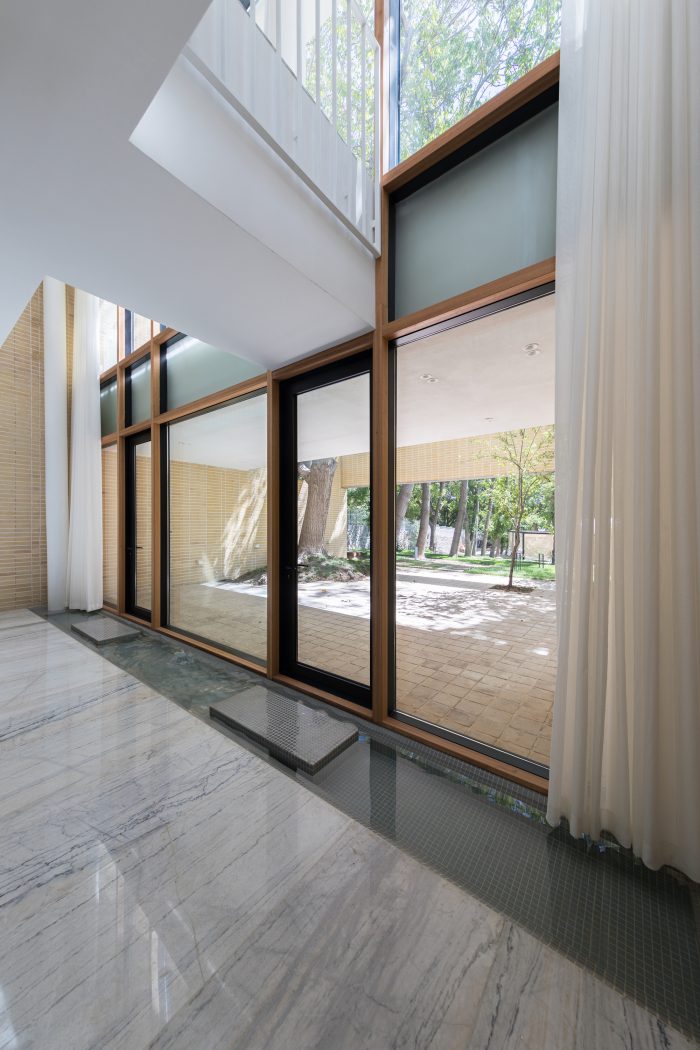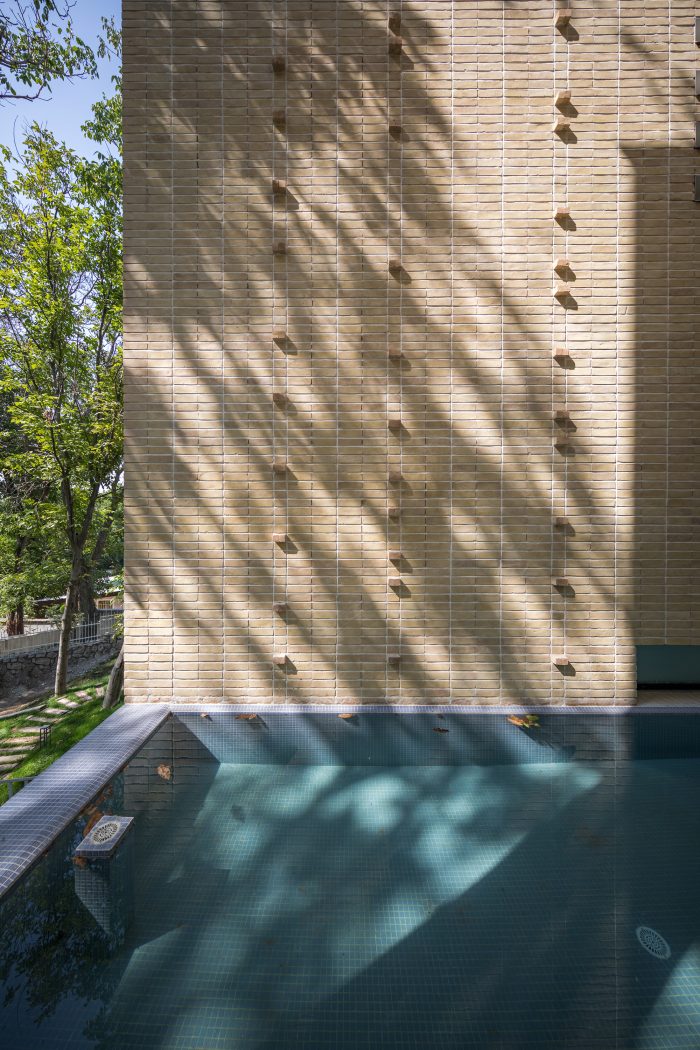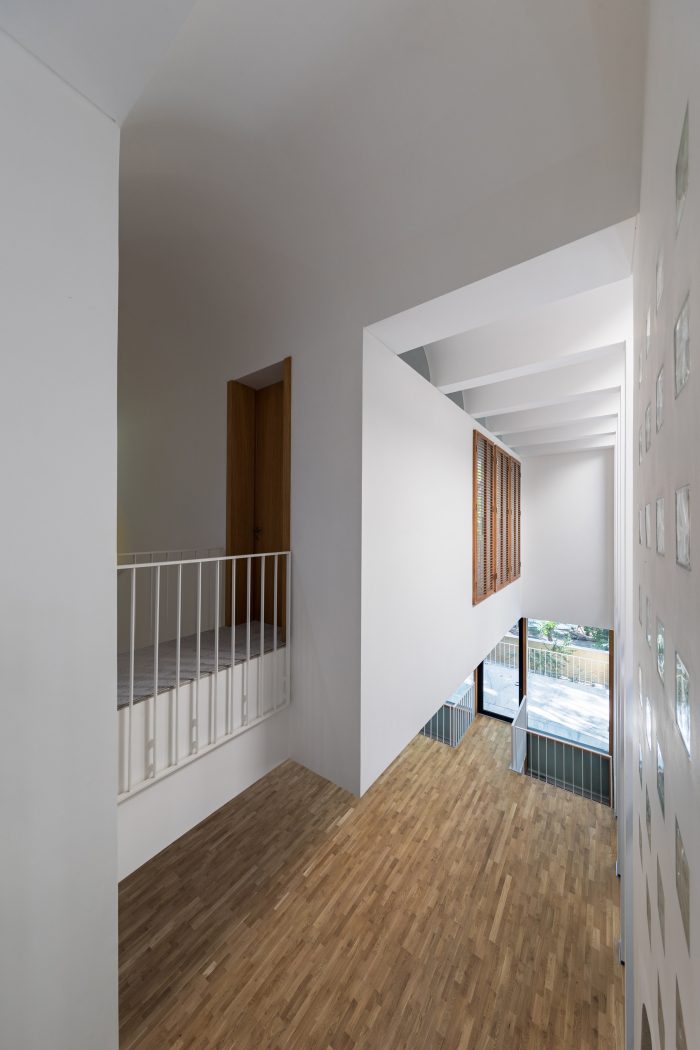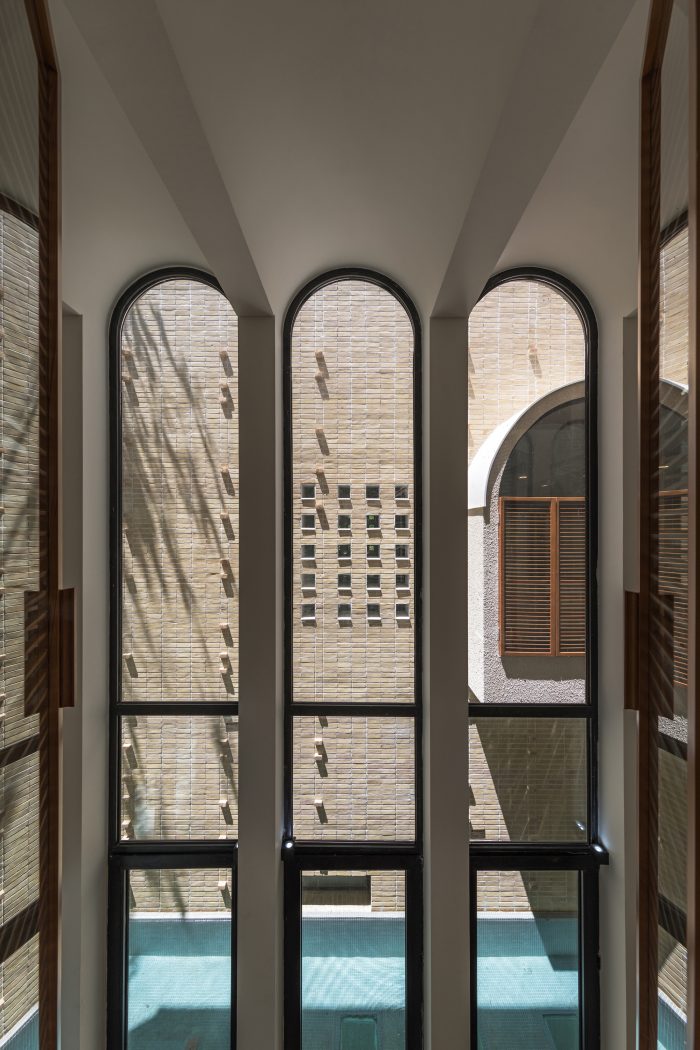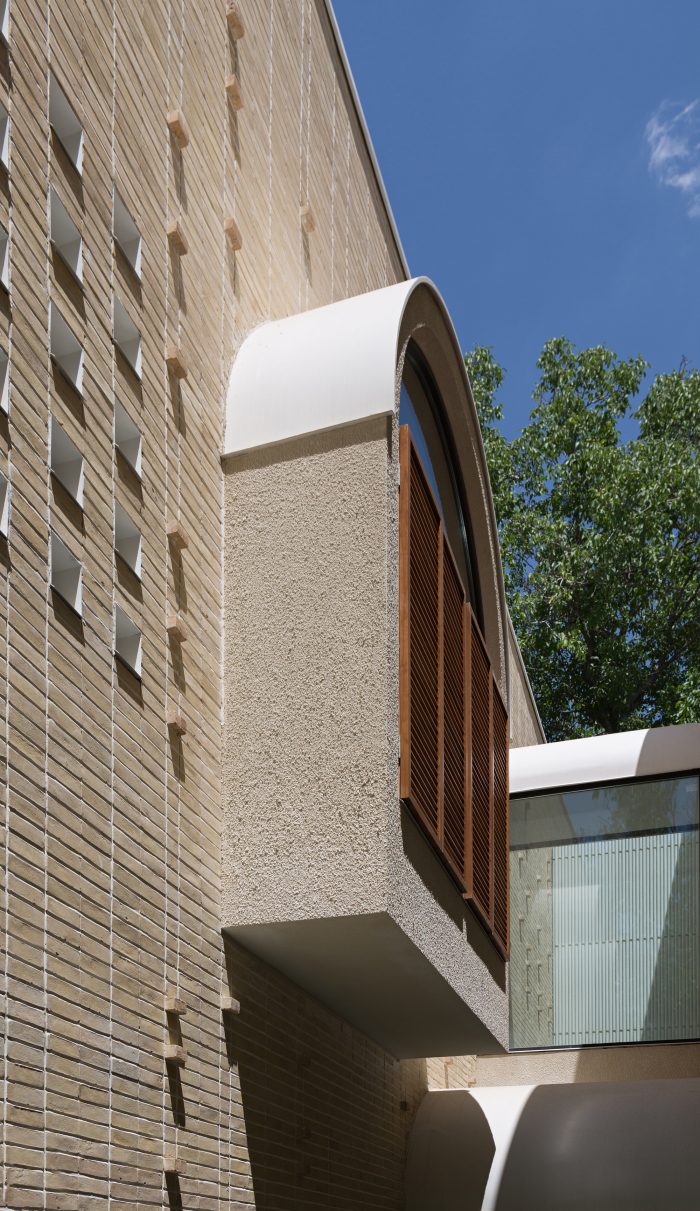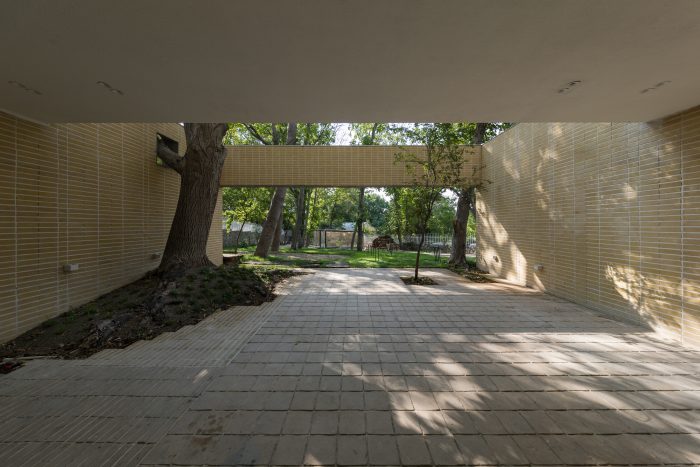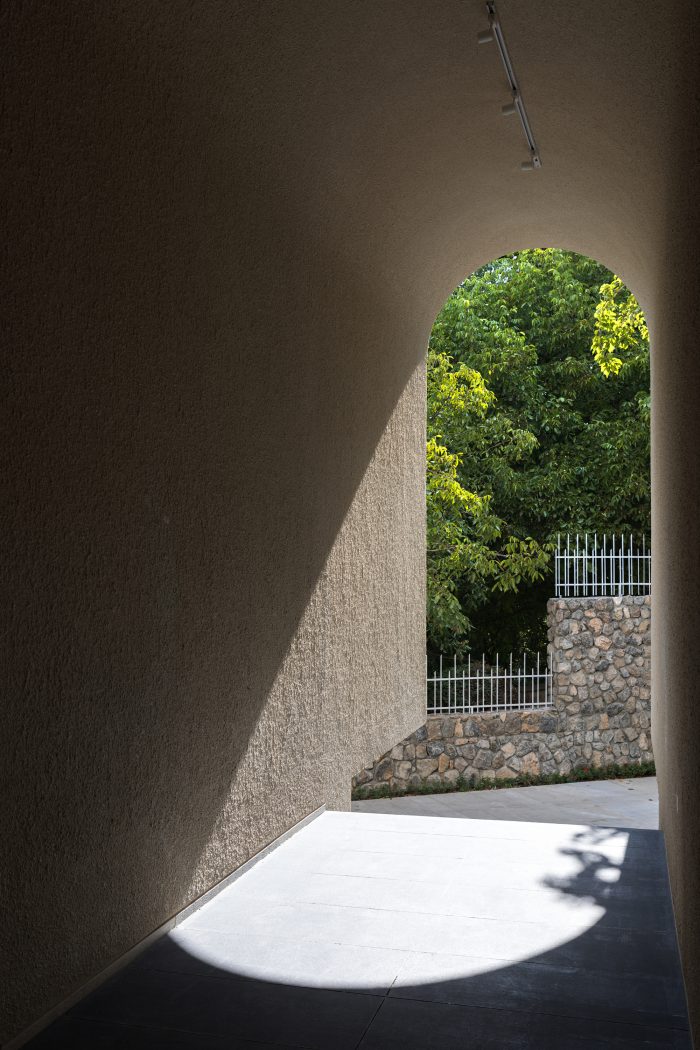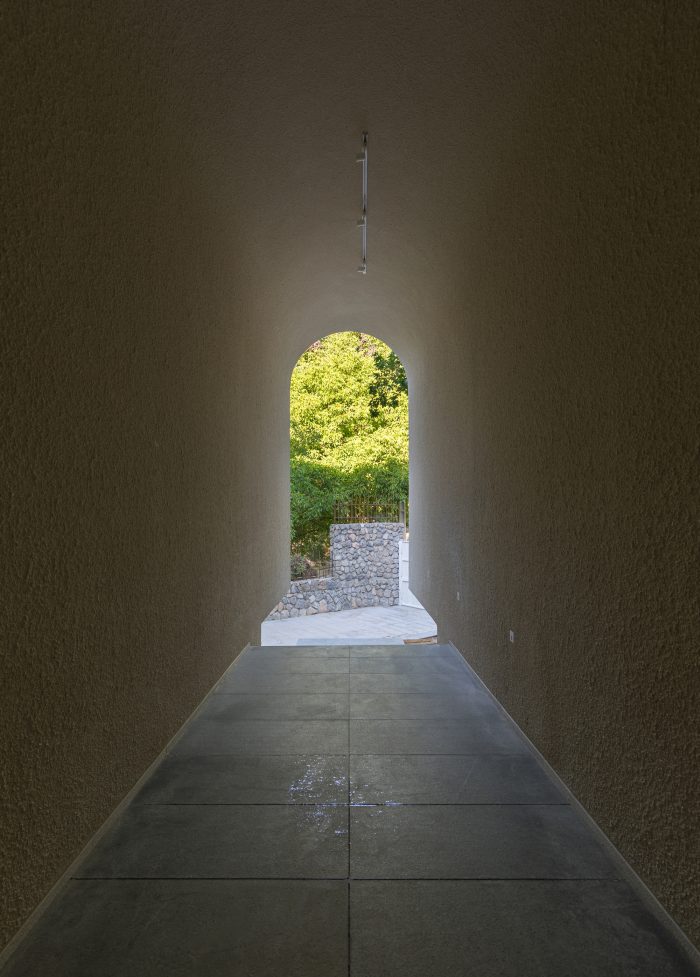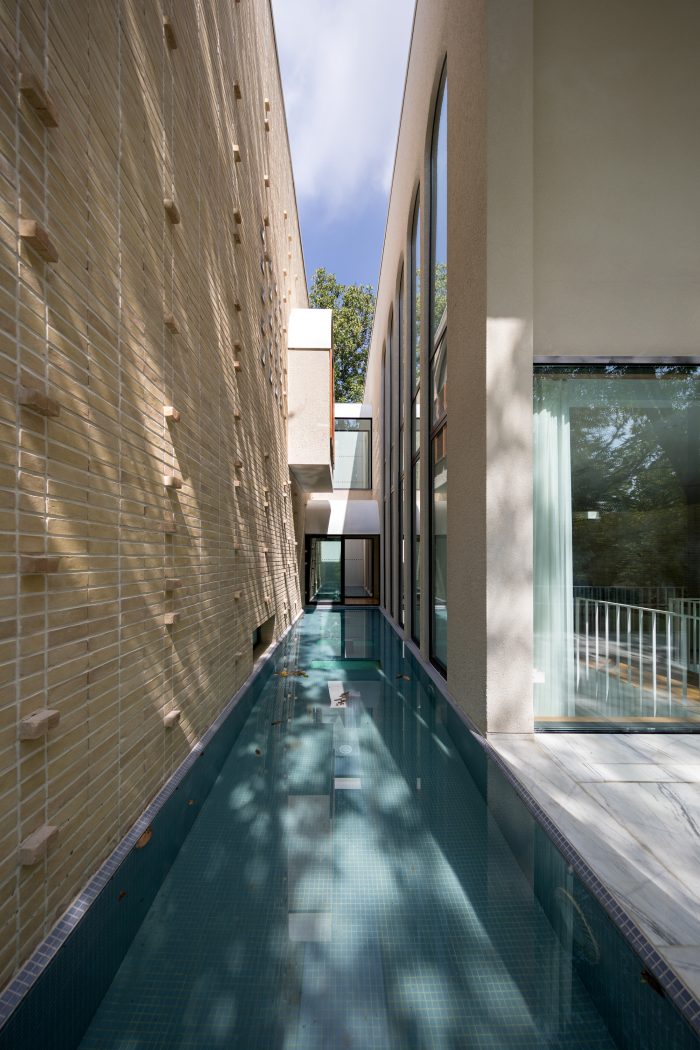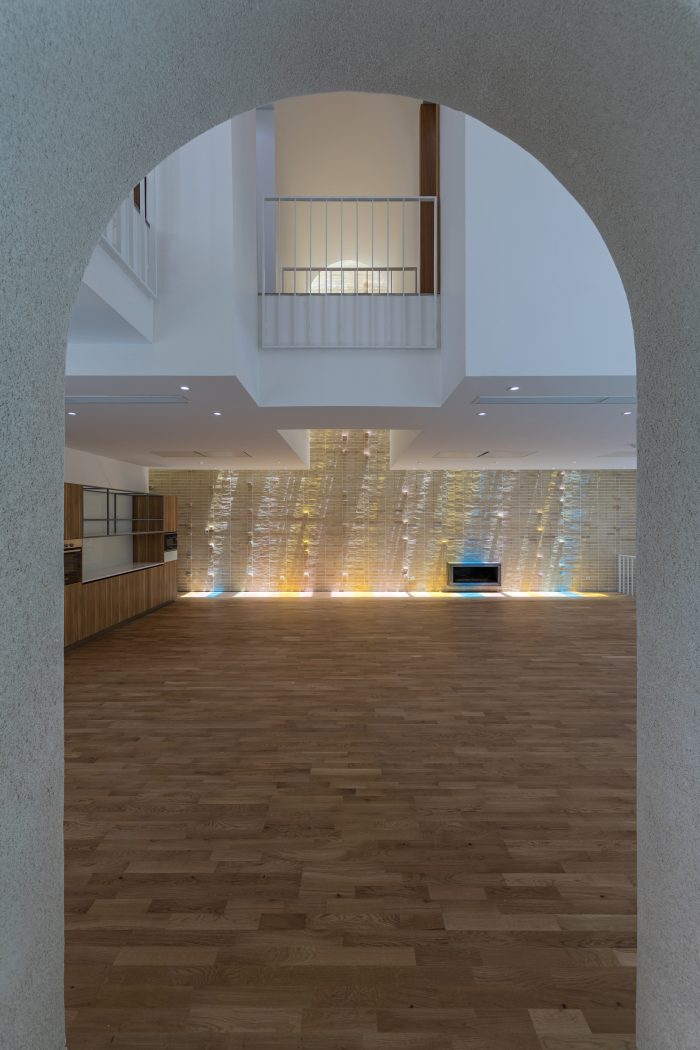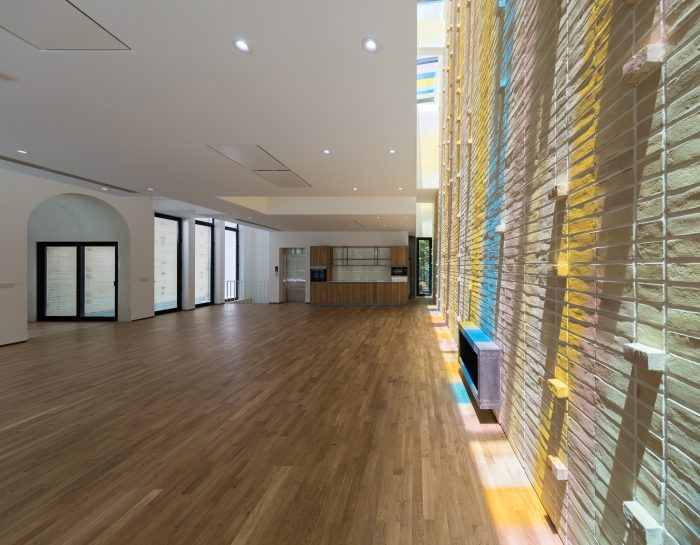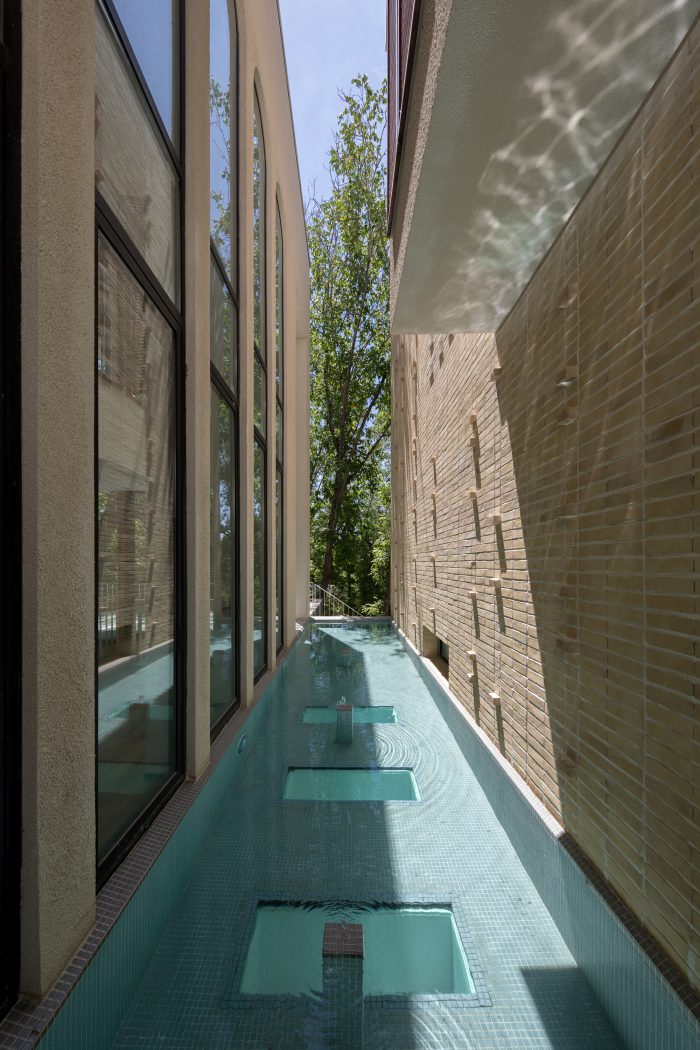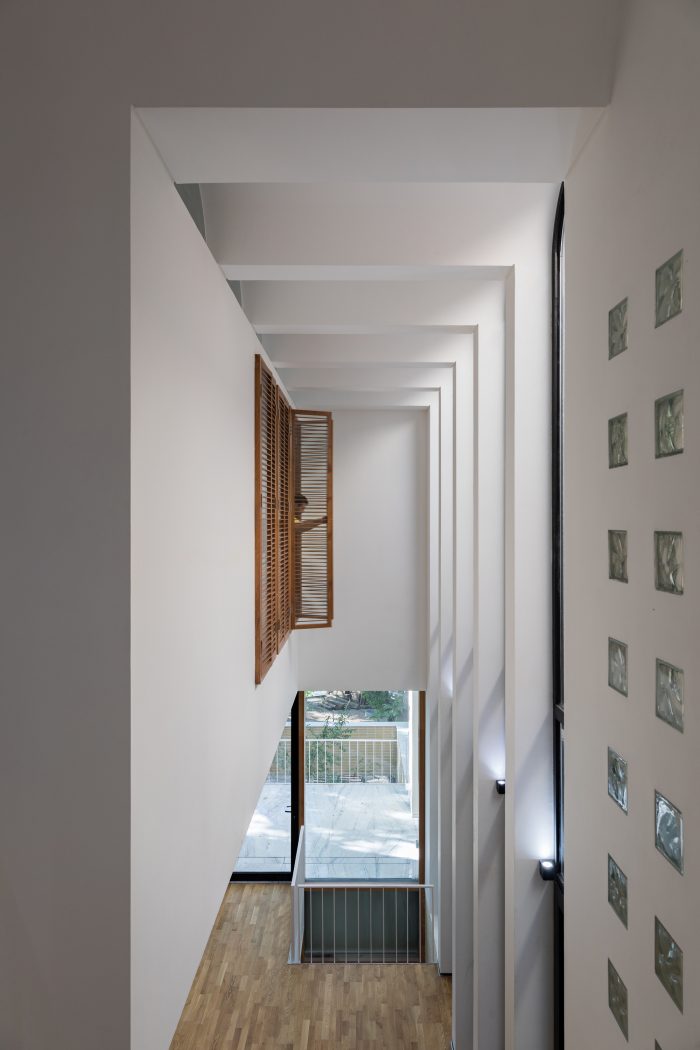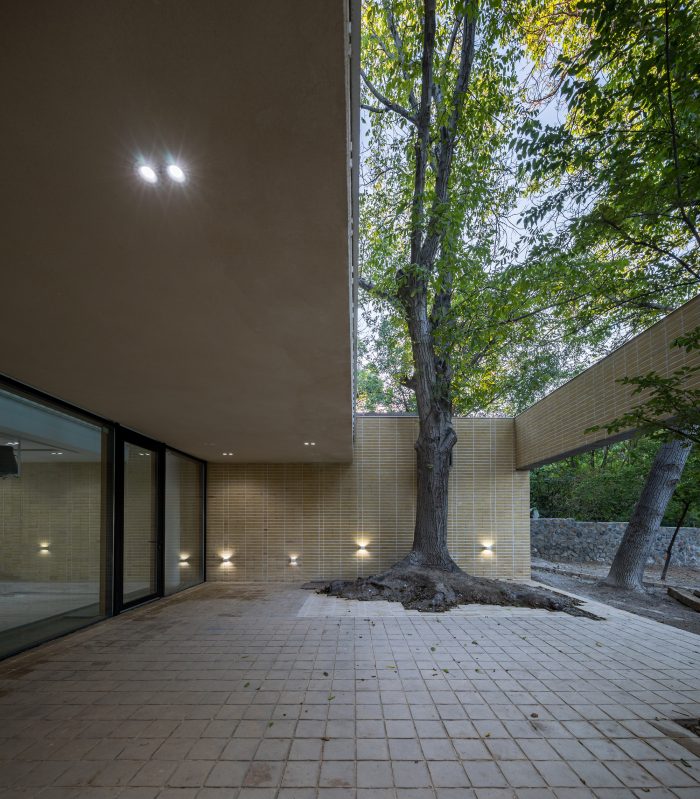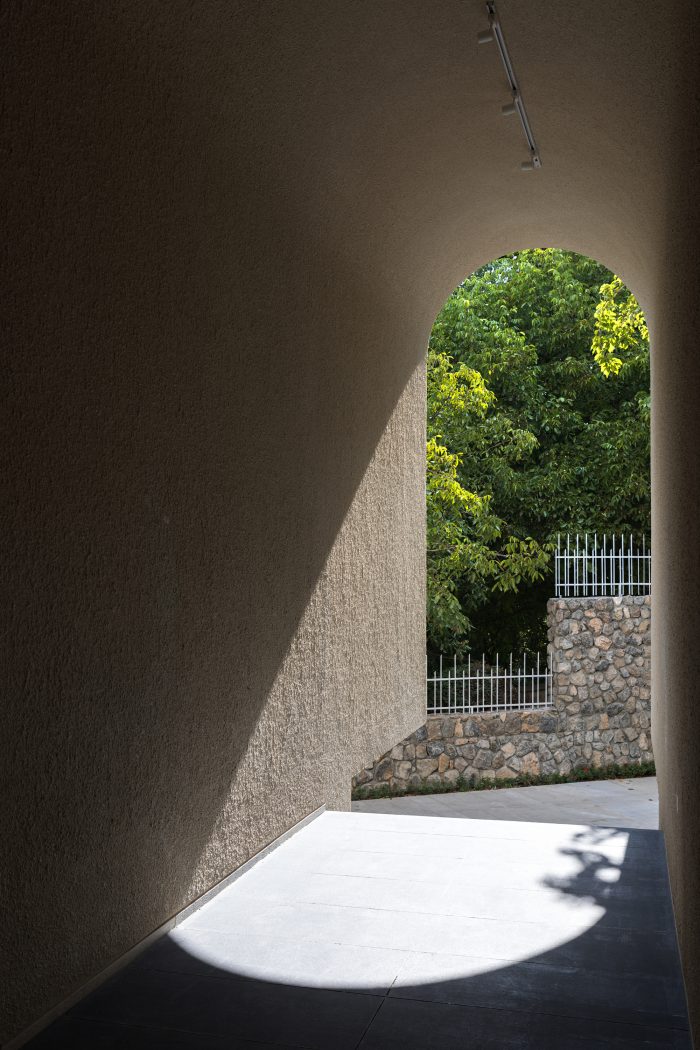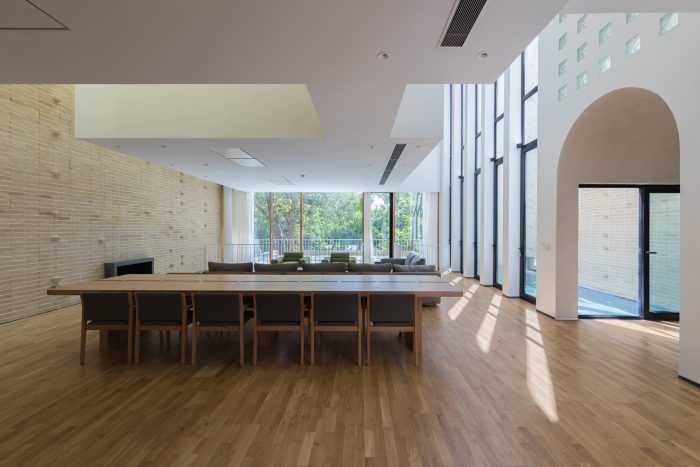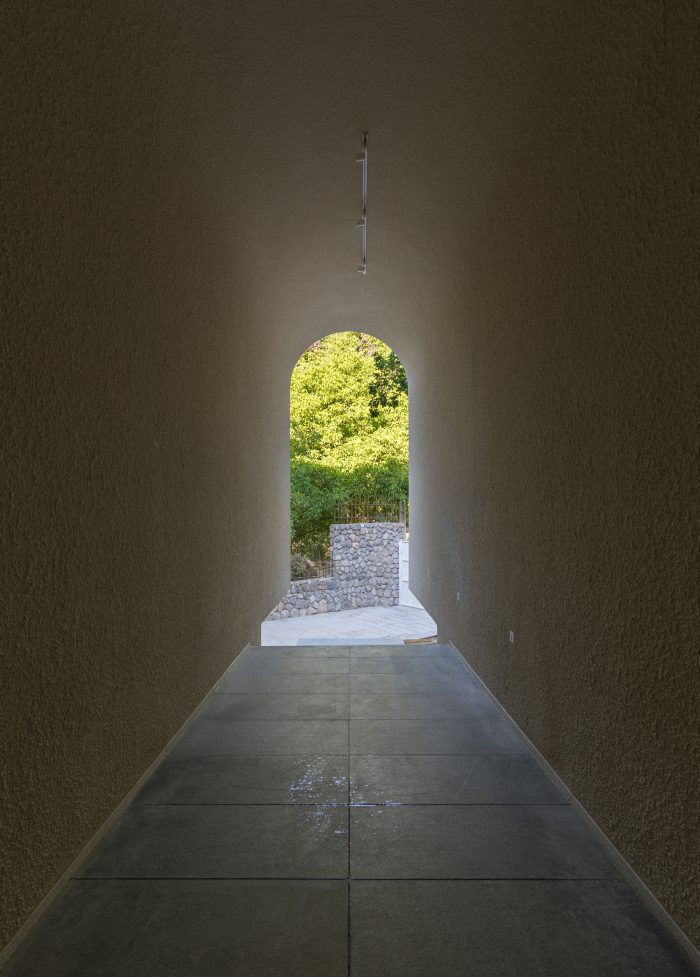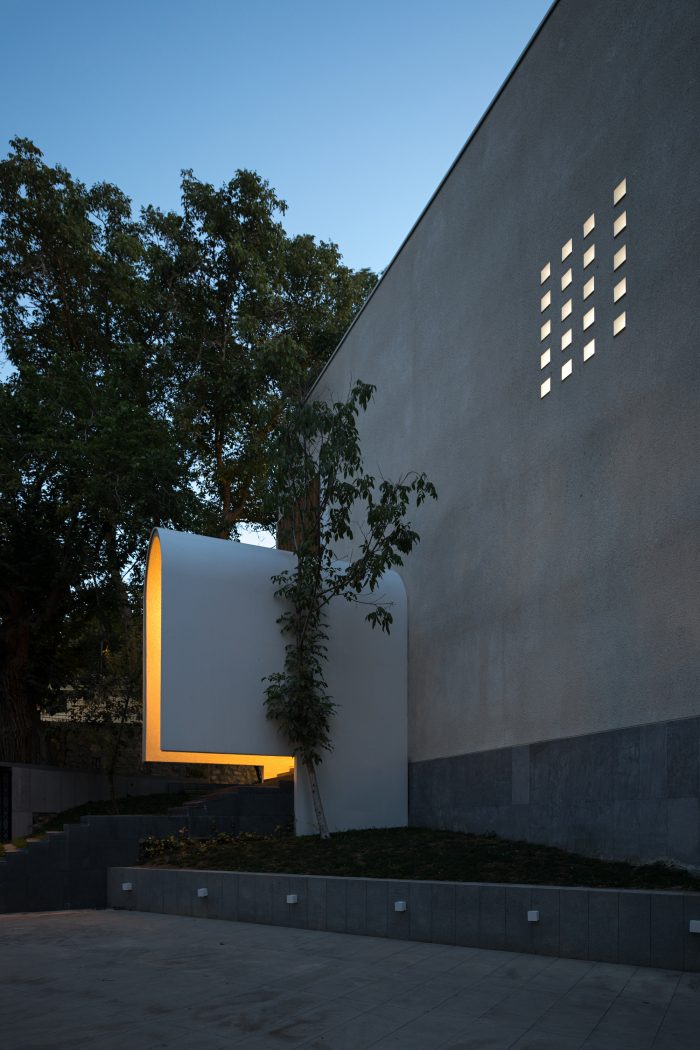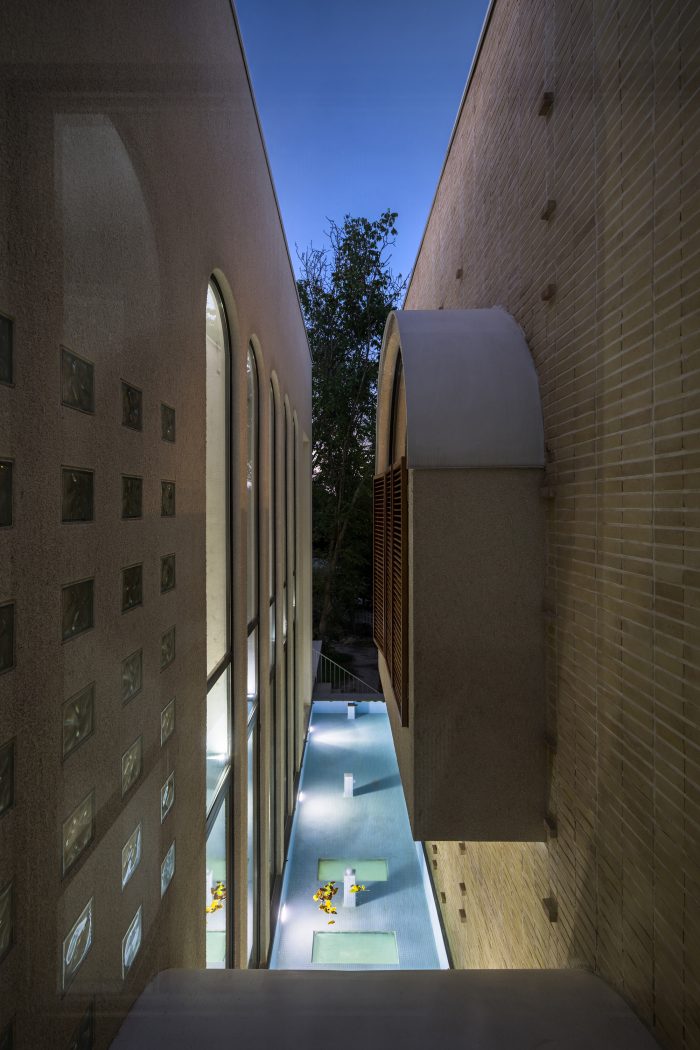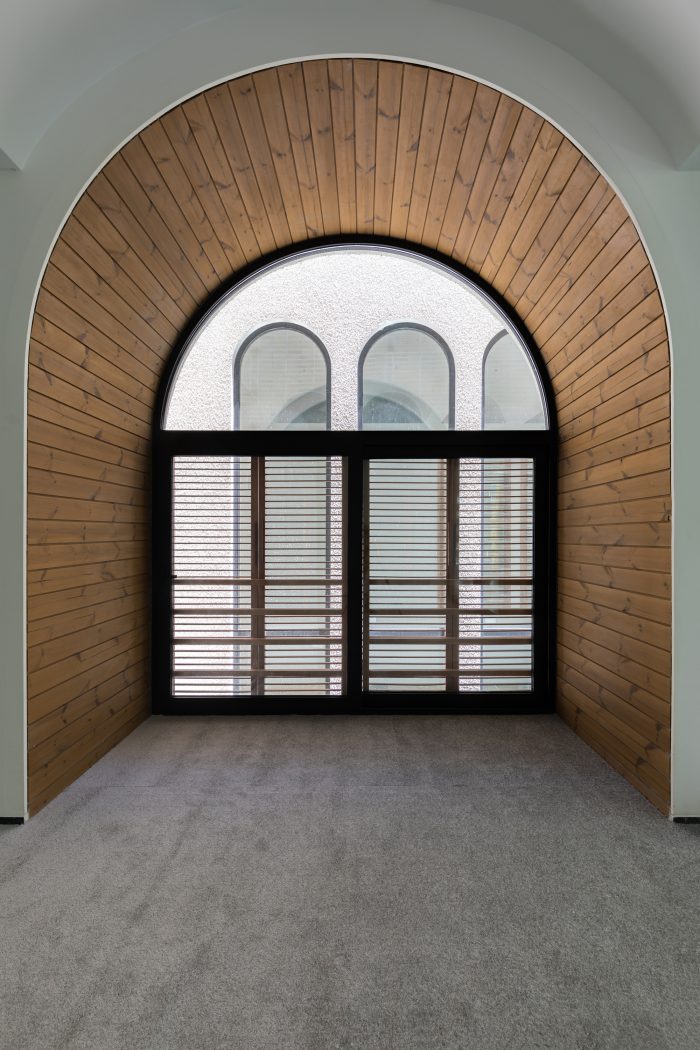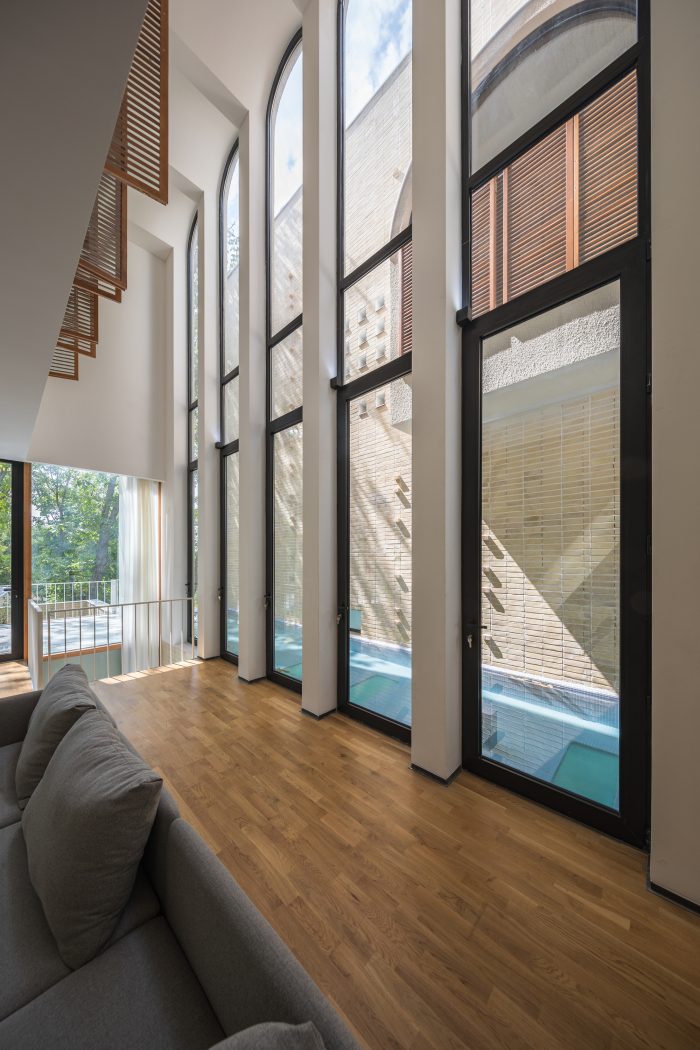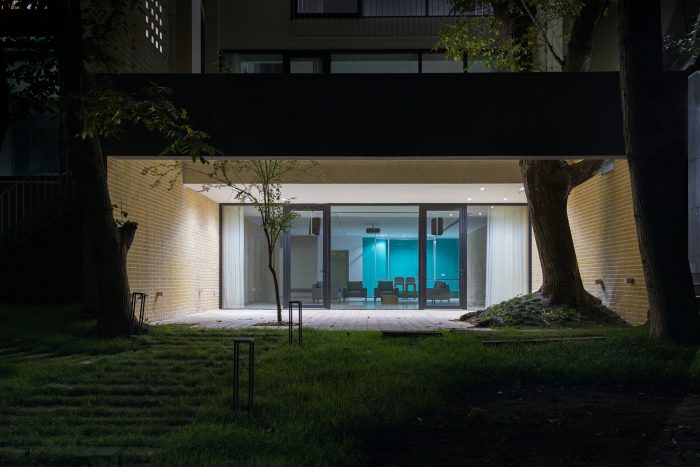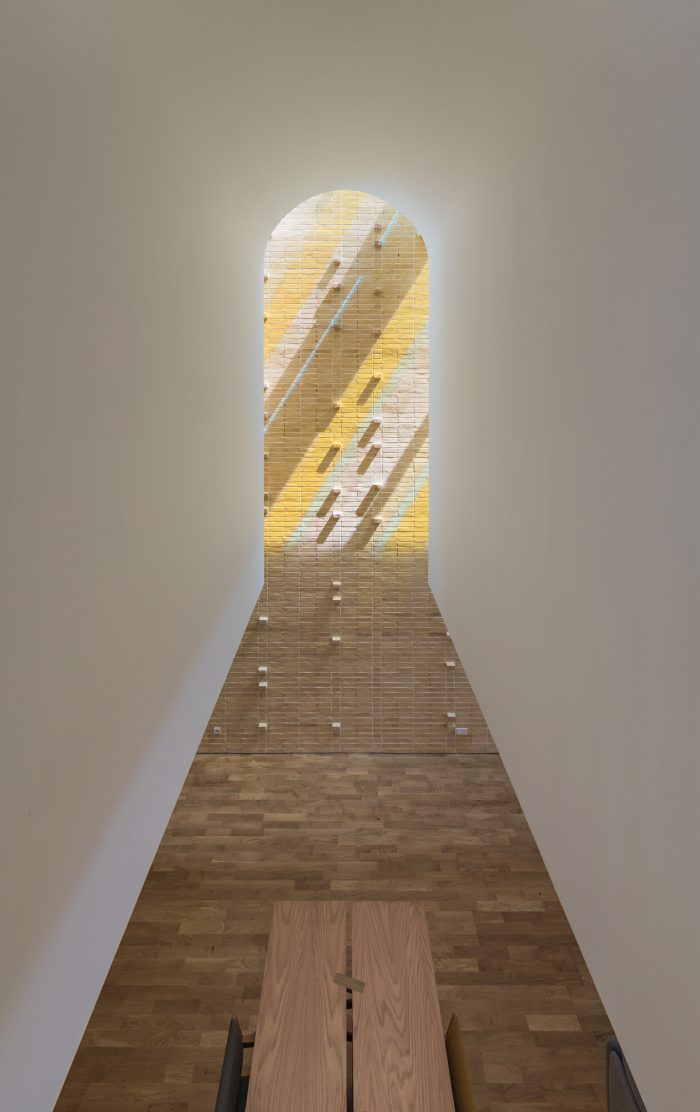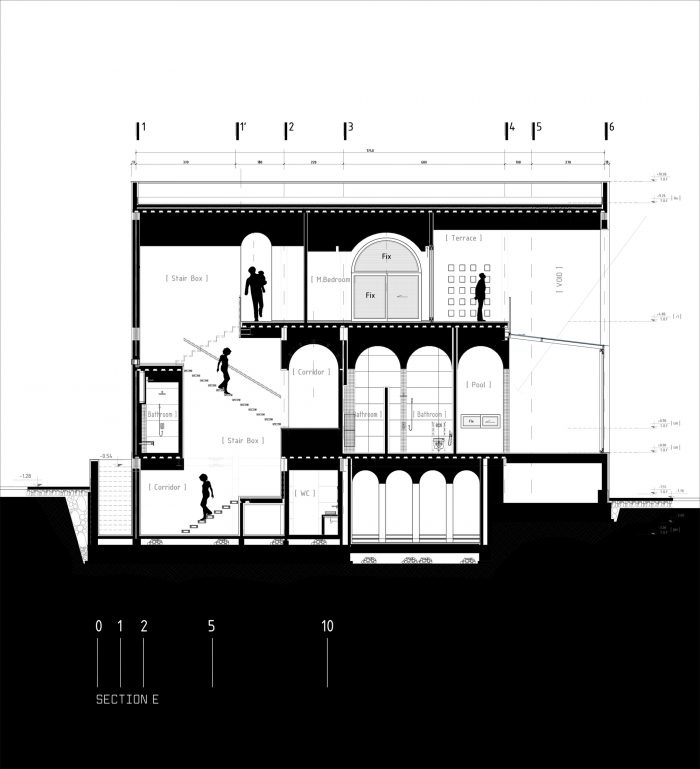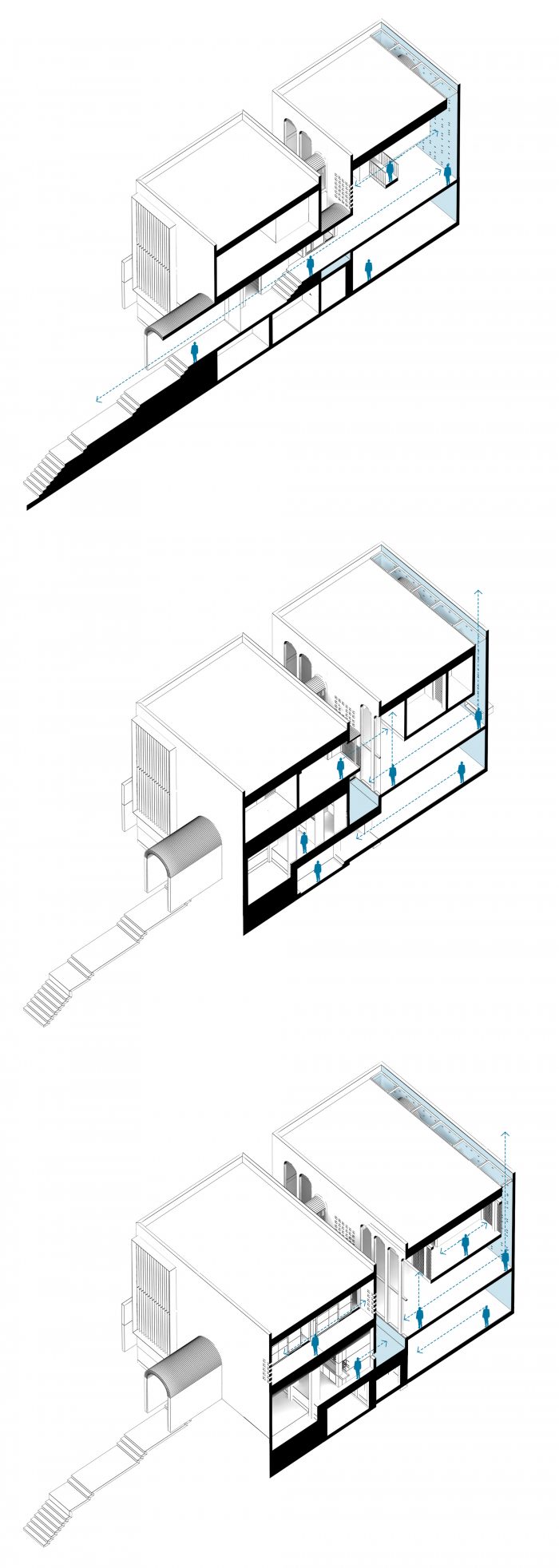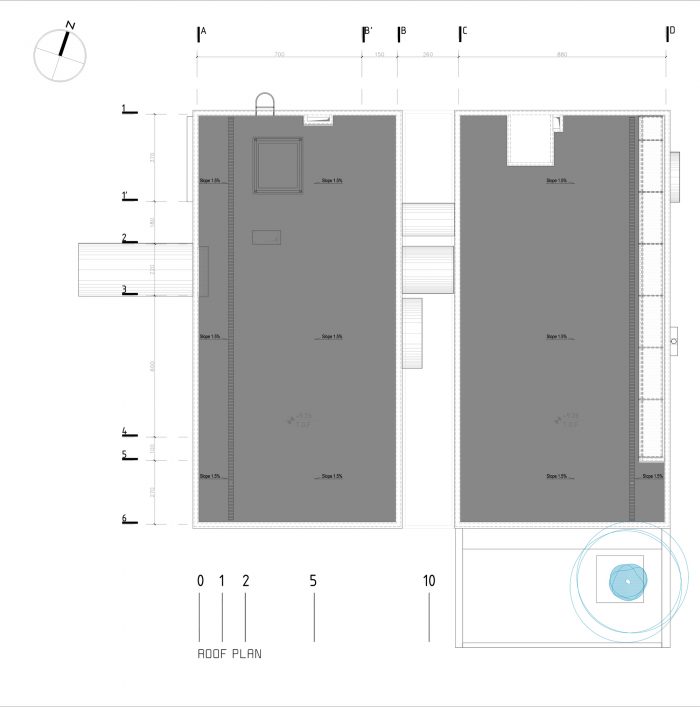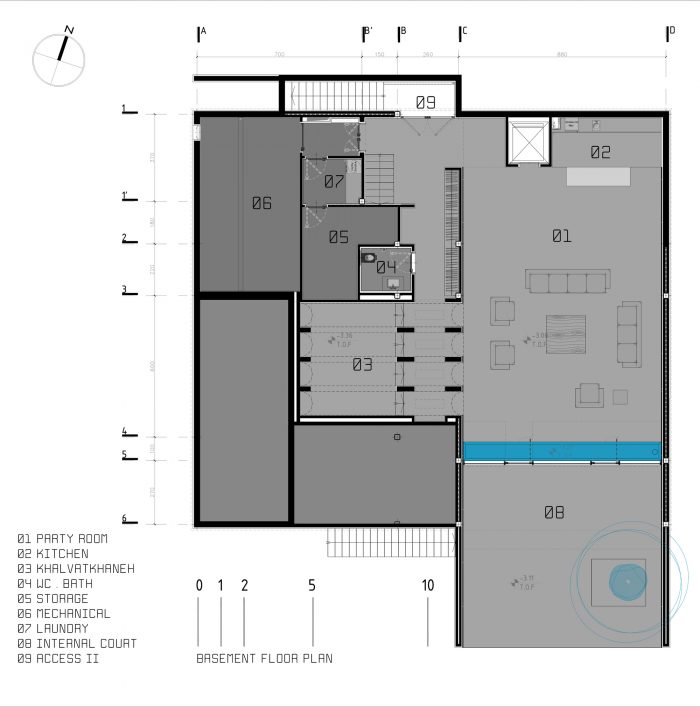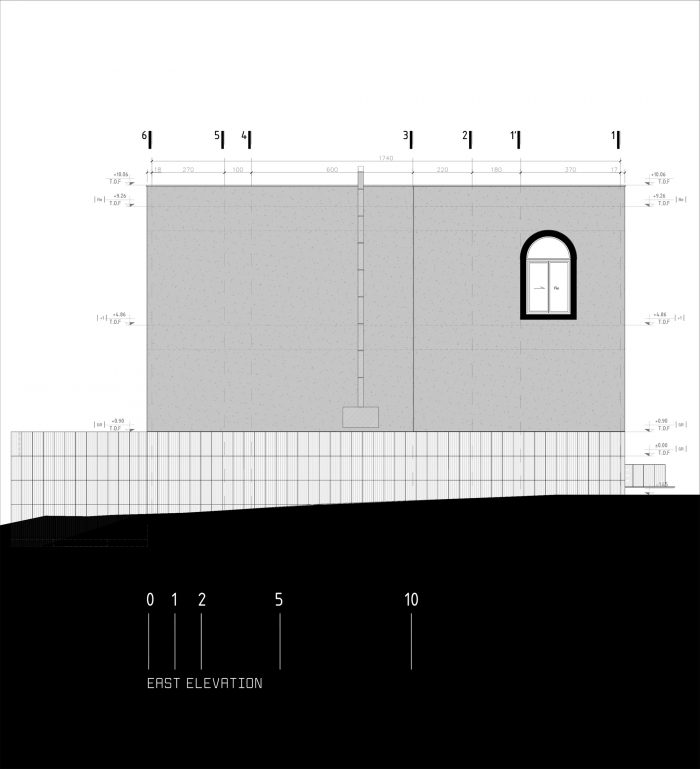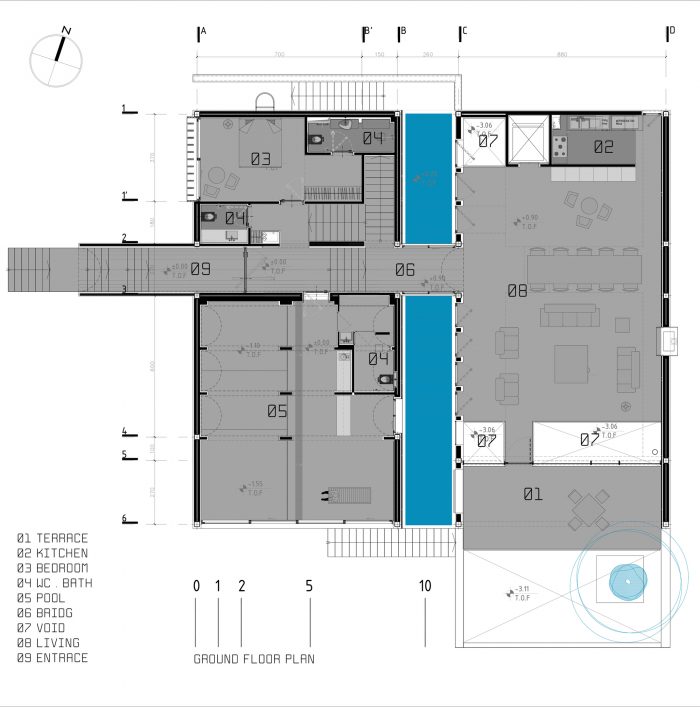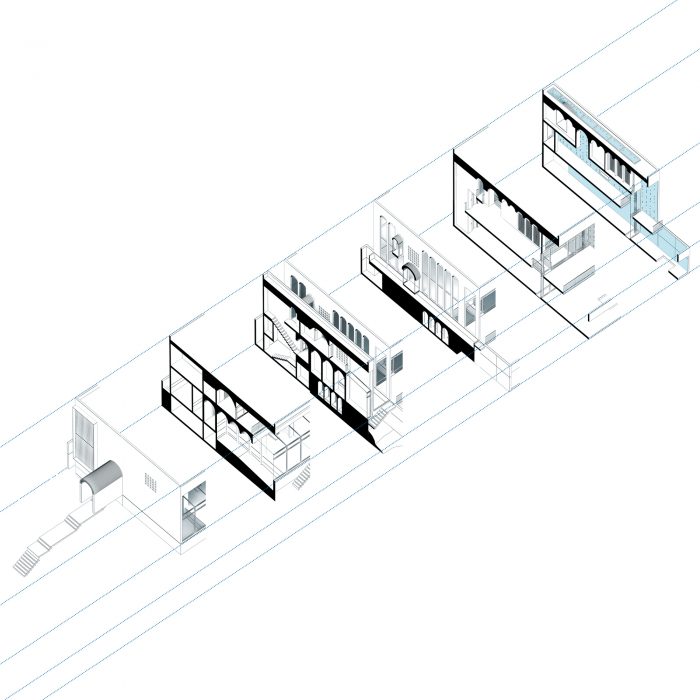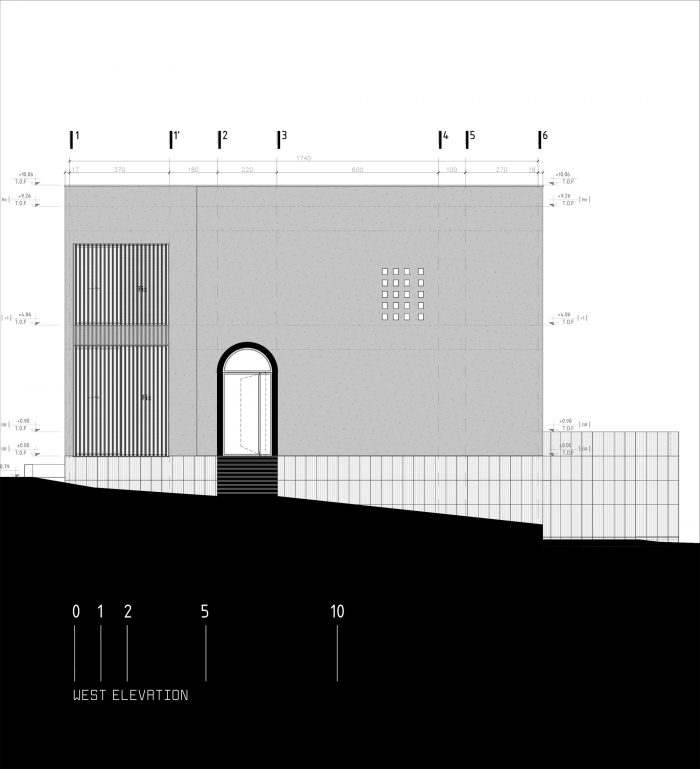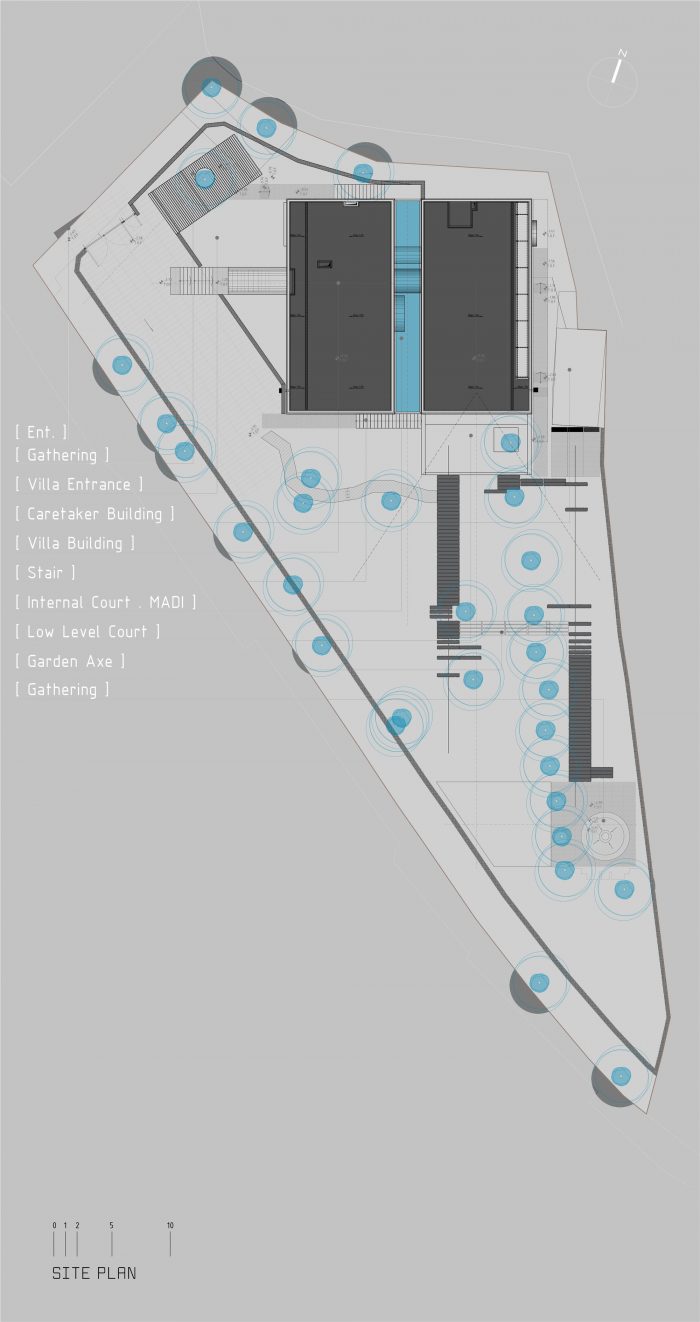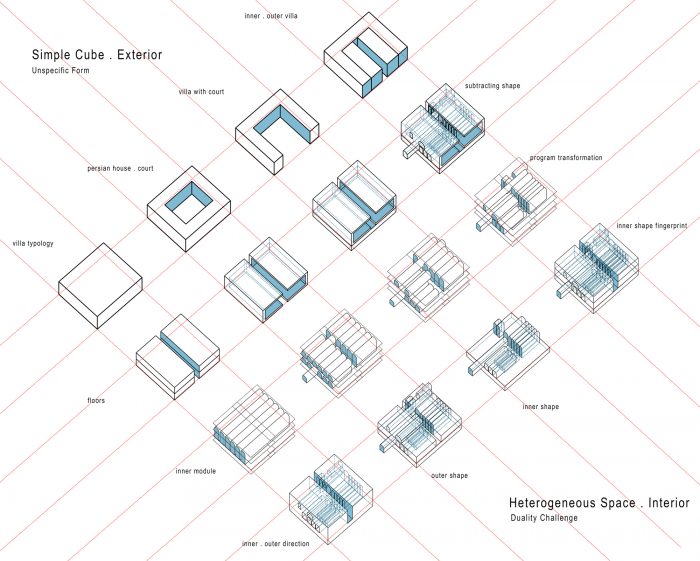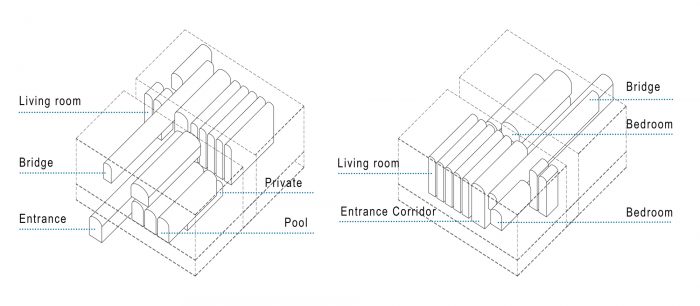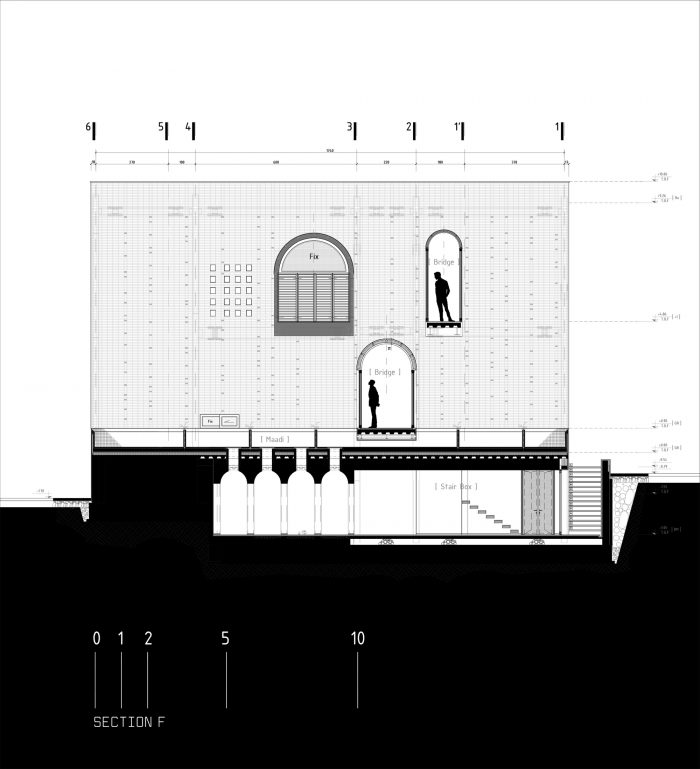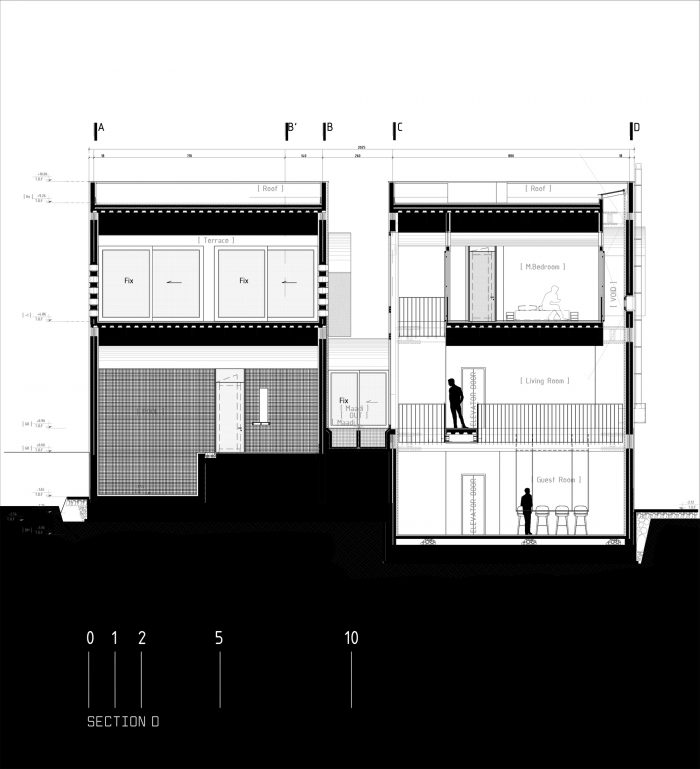本项目位于40年历史的城市花园之一,客户将本项目定义为一栋别墅,没有明显的外部外观和朝向,最小的分辨率,不具体的形式,尽可能地吸引最少的注意力。相反,用户选择多样化的内部空间,最大限度地享受存在于别墅中的乐趣。我们试图在设计过程中挑战这种二元性–内部的多样性和外部的简洁性,并将其作为设计理念的基础。
Located in one of the 40-year-old urban gardens, this project was defined by the client as a villa with no distinct external appearance and facing, minimum resolution, unspecific form, and attracting the least attention possible. Conversely, the user opts for diverse interior spaces, which maximize the enjoyment of presence in the villa. We tried to challenge this duality—the interior diversity and the exterior simplicity—in the designing process and consider it the basis for the design concept.
关于这种对比,我们基于面对内部和外部几何形状的基本形成–直线正交作为被包围的形式和曲线形状空内部。形体的出现始于一个简单的立方体,由定向空心发展而来,其内部的集中度比外部更重要。
Concerning this contrast, we based the elementary formation on confronting interior and exterior geometries—linear orthogonal as the surrounded form and curve shape empties inside. The form emersion initiated with a simple cube, developed by oriented hollow, with which concentration on the inside got more significant than outside.
最后,室内空间的多样性形成了设计发展的基础。灌溉花园的水流,位于场地的北部,提供了通过中央空间扩展的机会,形成项目内部的水流。这个中央空间被命名为Madi–一种河流。
Finally, the diversity of interior spaces shaped the basis of design development. The water stream, which irrigates gardens, situated on the north part of the site, provided the opportunity to expand it through the central space to form a water current inside the project. This central space has named Madi – a type of river.
项目的立方体形式被切成了两半,中心出现了一个中间的空间。室内空间的集中度、照明等空间特征都是朝向马迪的。精神室内的几何方位是向着Maadi的,与Maadi的方位垂直,而Maadi的方位是与花园的几何相协调的。这种几何冲突–纯正的立方体与拱门的对比,使项目的建筑变成了一种存在与直觉的建筑。
The project’s cubic form has sliced into two halves, and a between space emerged in the center. The concentration of interior spaces, lighting, and other spatial characteristics are all toward Maadi. The spirit interior geometry orientation is toward Maadi, perpendicular to Maadi’s orientation, which is in harmony with the garden’s geometry. This geometric conflict—the contrast between pure cube and arches—turns the project’s architecture into an architecture of presence and intuition.
建筑师:Dida Office
面积:890 m²
年份:2020年
摄影:Mohammad Hassan Ettefagh
制造商。Barlinek木地板、Blum、Hafele、KWC、Keraben、Avijeh、Bosch、Diba、Nooranlighting、PMA、Sakhara、Schniz、Setarehshomal
负责建筑师:Masoud Hatami
建筑师:Habibeh Shabani, Milad Asadi
起草:Abdoreza Pourqasemi
3 D建模:Hamidreza Shabani
监事:Ashkan Bakhshi
建设:Imen Sazeh
Mep顾问:Ali Abbaszadeh
暖通顾问:Ali Abbaszadeh
结构工程师:Reza Abbasi
国家:伊朗Architects: Dida Office
Area: 890 m²
Year: 2020
Photographs: Mohammad Hassan Ettefagh
Manufacturers: Barlinek Wooden Floors, Blum, Hafele, KWC, Keraben, Avijeh, Bosch, Diba, Nooranlighting, PMA, Sakhara, Schniz, Setarehshomal
Architect In Charge:Masoud Hatami
Architect:Habibeh Shabani, Milad Asadi
Drafting:Abdoreza Pourqasemi
3 D Modelling :Hamidreza Shabani
Supervisor:Ashkan Bakhshi
Construction:Imen Sazeh
Mep Consultant:Ali Abbaszadeh
Hvac Consultant:Ali Abbaszadeh
Structure Engineer:Reza Abbasi
Country:Iran


